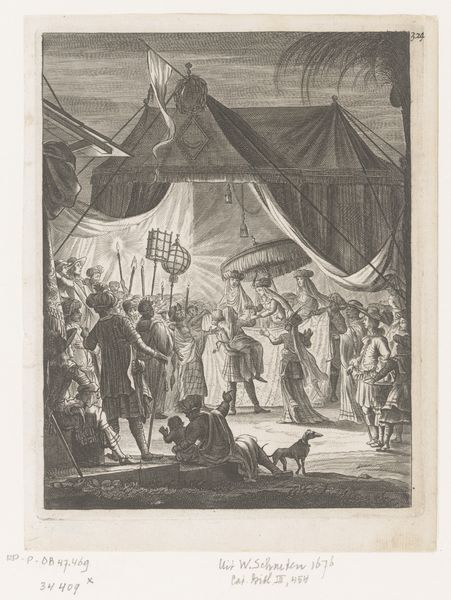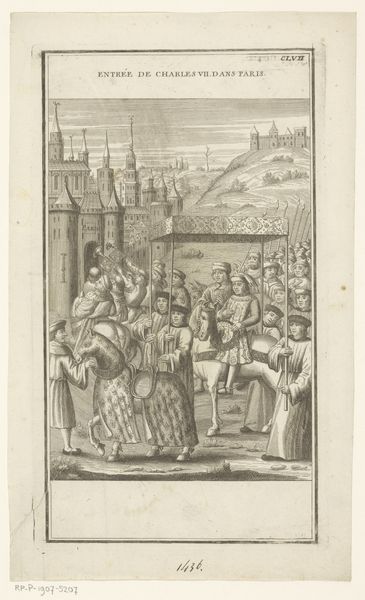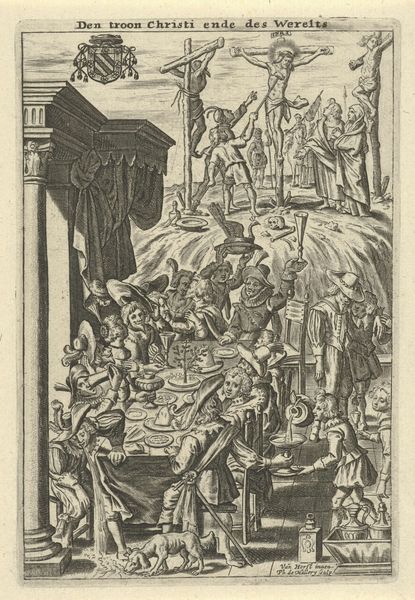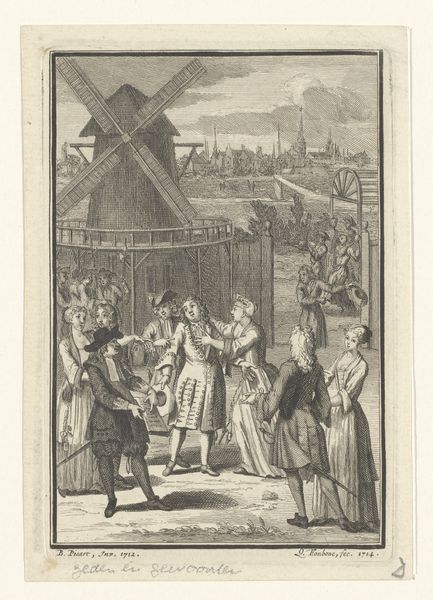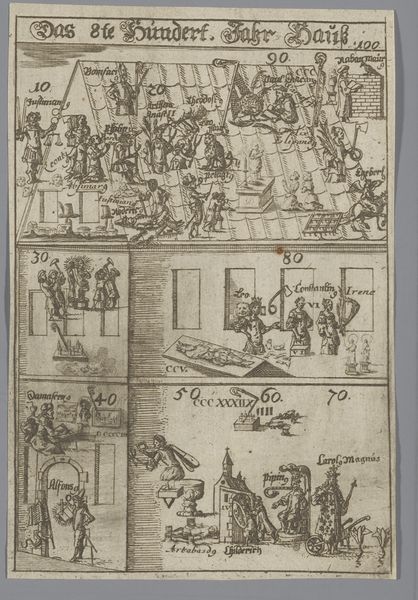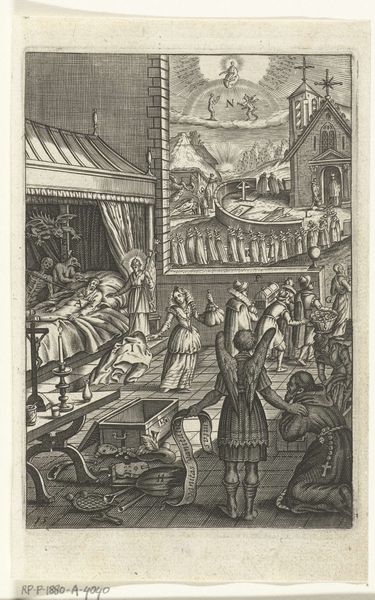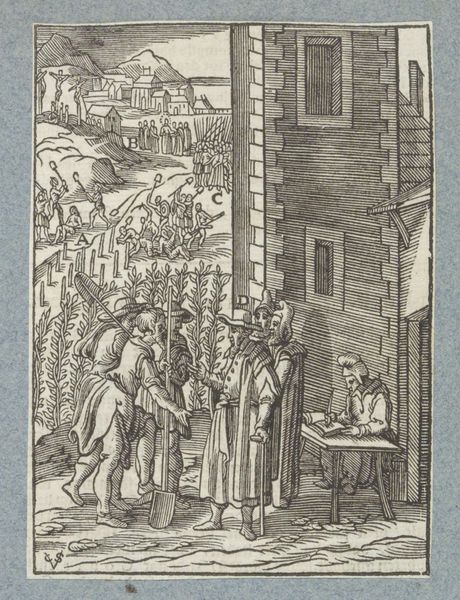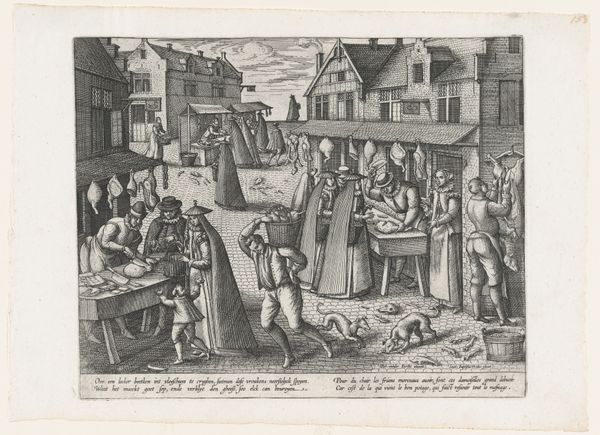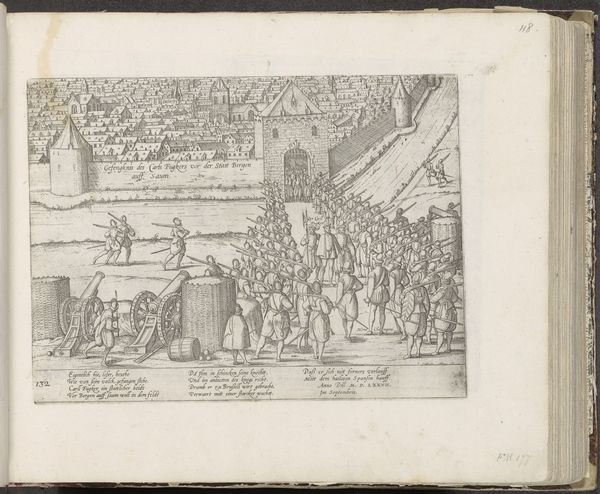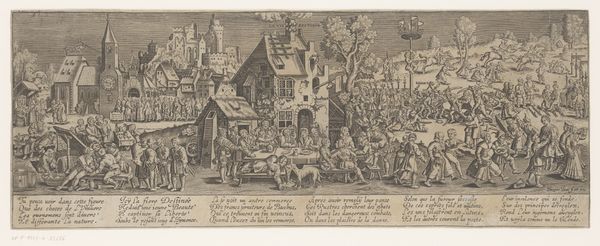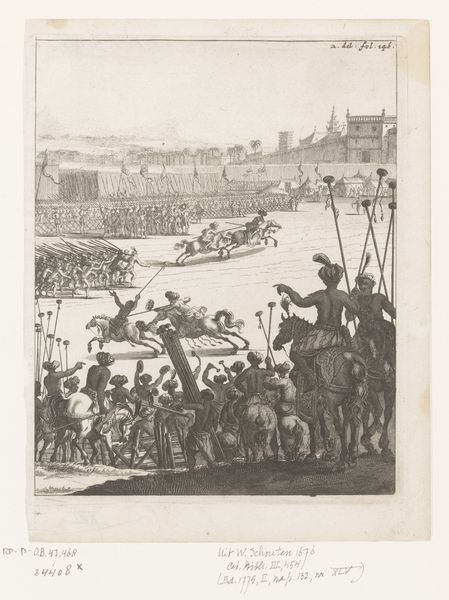
drawing, print, etching, paper, ink
#
drawing
# print
#
etching
#
figuration
#
paper
#
ink
#
cityscape
#
genre-painting
Dimensions: height 388 mm, width 298 mm
Copyright: Rijks Museum: Open Domain
Curator: Before us, we have Julius Conrad's "Puppenspiel," an etching and ink print on paper dating back to before 1954. My eye is drawn to its densely packed composition. It's like a flurry of movement captured in monochrome. Editor: Yes, that's immediately striking. It possesses an almost frenetic energy, achieved through the layering of figures and architectural elements, giving it a very bustling atmosphere. The light and shadow play is really evocative. Curator: Precisely. It’s also a genre painting, representing a type of theatrical performance popular amongst all the social classes, featuring both a cityscape backdrop and a sense of public entertainment that highlights societal rituals and interactions within urban spaces. The "Grand Guignol" marquee suggests a rather sensational style of theatre. Editor: True. And notice the way Conrad utilizes etching to render the diverse textures, from the billowing tent canvas to the more precise line work in the architectural details. Those dense groupings of people give the scene structure, leading your eye towards the focal point on the small stage. There's a real balance, though a deliberately chaotic one, between the stage action and the spectators below. Curator: It's as much about the audience as it is about the show. Observe how the varying sizes and rendering styles emphasize different tiers of importance or observation. The cityscape serves to anchor this performance, emphasizing that the stage is actually the city and its players at the moment. These themes recur in this artist's paintings as a whole. The composition implies how social narratives of this public nature often occur for political consumption and discourse. Editor: And the repeated geometries – the triangular tent roof echoing in the patterning on the ground, almost pulling the whole piece into itself! The stark, raking light really emphasises it all. This geometric conversation produces a tension, formal yet deeply representational. Curator: Right. So it becomes both a spectacle and a commentary on spectating—a theme explored by social realists after the First World War. Editor: Indeed, it seems Conrad achieves a unique visual experience of public life in the mid-20th Century, so interesting! Curator: Yes, "Puppenspiel" serves as both document and declaration. It reminds us how performance—the play within a play and perhaps everyday public behavior—reflects our values and shared experiences. Editor: An exercise of great dynamism! I am happy to take this experience with me!
Comments
No comments
Be the first to comment and join the conversation on the ultimate creative platform.
